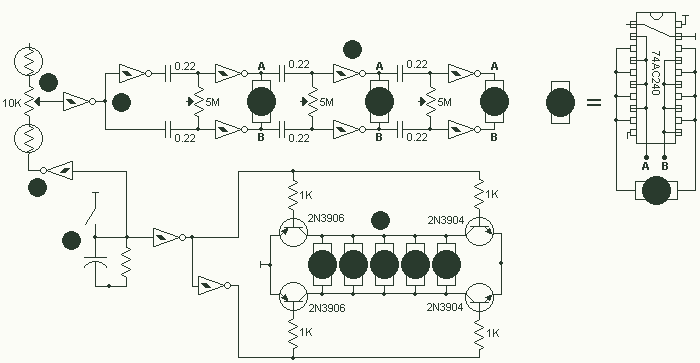
The Millipede

A friend and I are both trying to build a millipede. Because of obvious reasons, the millipede is NOT going to have 1000 feet. Instead, it is going to have 16 pager motors as feet. It will also have 3 MicroMotors to bend towards light, and a backup sensor.
The millipede design incorporates 16 pager motors that serve as its "feet," providing locomotion through a coordinated movement pattern. Each pager motor is a small DC motor that can be controlled to rotate in both directions, allowing for forward and backward movement. The motors will be mounted on a lightweight chassis, which can be constructed from materials such as plastic or aluminum to minimize weight while maintaining structural integrity.
To achieve the bending motion towards light, the design includes three MicroMotors. These motors will be strategically placed to adjust the orientation of the millipede in response to light stimuli. A light sensor, such as a photoresistor or a phototransistor, will be integrated into the circuit to detect the intensity and direction of light. The output from the light sensor will be processed by a microcontroller, which will determine the appropriate motor actions to steer the millipede towards the light source.
For the control system, a microcontroller such as an Arduino or a PIC microcontroller can be employed. The microcontroller will be programmed to read the sensor inputs and control the motors accordingly. The circuit will require a power supply capable of providing sufficient voltage and current to drive all the motors simultaneously, which may involve using a battery pack or a regulated power source.
The backup sensor can be configured as an additional safety feature, possibly using an ultrasonic distance sensor to detect obstacles in the millipede's path. If an obstacle is detected, the microcontroller can trigger the motors to reverse or change direction, ensuring the millipede navigates effectively without colliding with objects.
Overall, this project combines elements of robotics, sensor integration, and control systems, making it an engaging and educational endeavor in electronics and programming.Me and a friend are both trying to build a millipede. Because of obvious reasons, the millipede is NOT going to have 1000 feet!!! Instead, it`s going to have 16 pager motors as feet. It will also have 3 MicroMotors to ``bend`` towards light, and a backup sensor. 🔗 External reference
The millipede design incorporates 16 pager motors that serve as its "feet," providing locomotion through a coordinated movement pattern. Each pager motor is a small DC motor that can be controlled to rotate in both directions, allowing for forward and backward movement. The motors will be mounted on a lightweight chassis, which can be constructed from materials such as plastic or aluminum to minimize weight while maintaining structural integrity.
To achieve the bending motion towards light, the design includes three MicroMotors. These motors will be strategically placed to adjust the orientation of the millipede in response to light stimuli. A light sensor, such as a photoresistor or a phototransistor, will be integrated into the circuit to detect the intensity and direction of light. The output from the light sensor will be processed by a microcontroller, which will determine the appropriate motor actions to steer the millipede towards the light source.
For the control system, a microcontroller such as an Arduino or a PIC microcontroller can be employed. The microcontroller will be programmed to read the sensor inputs and control the motors accordingly. The circuit will require a power supply capable of providing sufficient voltage and current to drive all the motors simultaneously, which may involve using a battery pack or a regulated power source.
The backup sensor can be configured as an additional safety feature, possibly using an ultrasonic distance sensor to detect obstacles in the millipede's path. If an obstacle is detected, the microcontroller can trigger the motors to reverse or change direction, ensuring the millipede navigates effectively without colliding with objects.
Overall, this project combines elements of robotics, sensor integration, and control systems, making it an engaging and educational endeavor in electronics and programming.Me and a friend are both trying to build a millipede. Because of obvious reasons, the millipede is NOT going to have 1000 feet!!! Instead, it`s going to have 16 pager motors as feet. It will also have 3 MicroMotors to ``bend`` towards light, and a backup sensor. 🔗 External reference